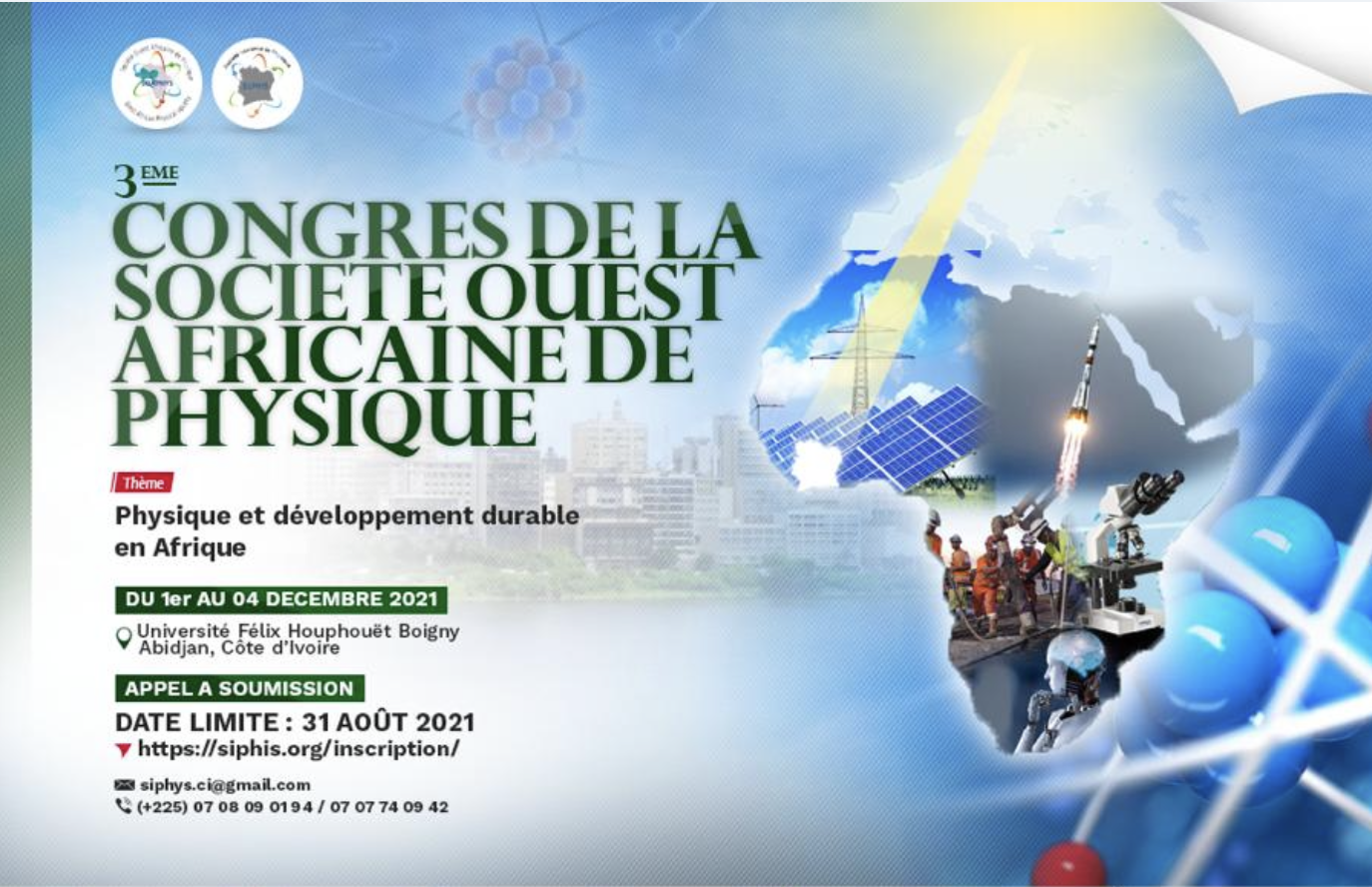by Cheikh Bop, on
Presentation of the congress

The main goals of the SOAPHYS is to promote physics as a major component for economical, social and environmental development for partner states. Each year, the congress organised by one of the partners allows to introduce and share experiences about physics and its applications.
C. T. Bop participated and presented his work during this congress.
The excitation of CNCN in the interstellar medium: Hyperfine resolved rate coefficients and non-LTE modeling - C. T. Bop

The recent detections of CNCN and HNCCN+ are seen as further evidence of the large abundance of NCCN in the interstellar medium. The accurate determination of the abundance of these chemically related compounds from the observational spectra requires the prior calculation of collisional rate coefficients. In this work, we aimed at computing hyperfine resolved rate coefficients for the CNCN–He collisional system.
First, we determined a new potential energy surface for the CNCN–He van der Waals complex from which we computed rotationally resolved excitation cross sections for energies up to 800 cm-1 using the quantum mechanical close-coupling approach. Then, hyperfine resolved transitions between the 30 low-lying pure rotational levels of CNCN were computed for temperatures ranging from 5 K to 150 K using an improved infinite order sudden approach. The analysis of the scattering results showed a propensity rule in favor of Δj = ΔF1= ΔF for the hyperfine transitions and a slight dominance of the odd Δj transitions.
Using these data, we carried out non-LTE radiative transfer calculations to simulate the excitation of CNCN in molecular clouds and to constrain the physical conditions of cold dark clouds. Preliminary results showed that the abundance of CNCN derived from observational spectra has to be revisited using these new collisional data.